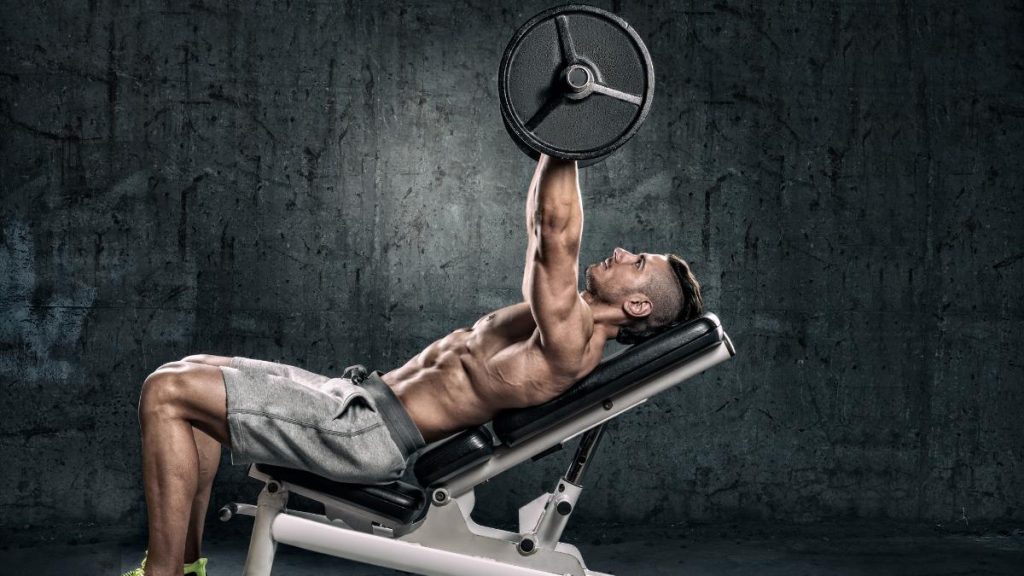Every lifter faces the incline vs. decline bench press debate when building a well-rounded chest. Incline presses target the upper chest, giving you that powerful, square look. Decline presses focus on the lower chest, creating a fuller, more aesthetic appearance. But which should you prioritize for the best results? The answer might surprise you. Stick around until the end for exclusive strategies and a fitness calculator to help you customize your chest workout plan.
What’s the Difference Between Incline and Decline Bench Press?
The incline bench press sets the bench at a 30-45-degree angle, emphasizing the upper pectorals and anterior deltoids. On the other hand, the decline bench press lowers the bench by 15-30 degrees, targeting the lower pectorals and reducing shoulder strain. Both exercises are powerful tools, but they work differently on your chest.
The key question: Should you focus on one or balance both in your workout routine?
The Shocking Truth About Chest Imbalances
Did you know that neglecting one angle of your chest can lead to visible imbalances? Many lifters focus solely on flat or incline presses, leaving their lower pecs underdeveloped. This can result in a top-heavy chest that lacks symmetry.
Tip: If you avoid decline bench presses, you might miss out on achieving a fully developed chest. Decline presses also reduce strain on the shoulders, making them a safer option for some lifters.
Pro Tip: To effectively target both areas, incorporate 3 sets of incline presses followed by 2 sets of decline presses.
Should You Prioritize Incline or Decline Bench Press?
Your priority depends on your goals and current physique:
- Incline Bench Press: Ideal for building a strong, prominent upper chest. This is crucial for achieving that “armor plate” look.
- Decline Bench Press: Better for shaping a rounded, aesthetic chest and reducing shoulder strain. It also tends to allow heavier lifting due to its natural leverage.
Tip: Want the best of both worlds? Rotate between incline and decline every other workout. This ensures even development across your chest.
The One Mistake You’re Probably Making
Most lifters stick to flat bench presses, believing it’s enough for overall chest development. Here’s the problem: The flat bench press doesn’t fully engage either the upper or lower chest. Relying solely on it can limit your gains and create gaps in muscle definition.
Tip: Ignoring incline or decline presses could leave you stuck on a plateau, wondering why your chest isn’t growing.
Try this combo for faster results:
- Incline Dumbbell Press (3 sets of 10)
- Decline Barbell Press (3 sets of 8)
Adding variety keeps your chest muscles guessing and growing.
The Science Behind Incline vs. Decline Bench Press
Research shows that the incline bench press activates the clavicular head of the pectorals up to 30% more than flat presses. Meanwhile, the decline press focuses on the sternal head, which makes up the bulk of your chest mass. For complete chest development, you need both.
Tip: Adjust your bench angle to maximize your chest gains. A 15-degree incline can target the upper chest without overloading the shoulders.
The Secret to Doubling Your Chest Gains
Here’s a secret most people overlook: Combining incline and decline presses with isolation moves like cable crossovers can double your gains. Why? Isolation moves allow you to fine-tune specific areas of your chest.
Workout Hack: Finish your bench press session with 2 sets of high-to-low cable flys to target the lower pecs and fully fatigue the muscle.
Tip: Without isolation exercises, you risk leaving weaker areas of your chest underdeveloped.
How to Decide: Incline vs. Decline Bench Press
- Beginner: Start with incline bench presses to build upper chest strength and shoulder stability.
- Intermediate: Rotate incline and decline presses weekly to ensure balanced development.
- Advanced: Tailor your focus based on aesthetics. Need fullness? Add more decline. Want height? Emphasize incline.
By understanding the differences and benefits of the incline vs. decline bench press, you can sculpt a strong and symmetrical chest. Don’t fall into the trap of focusing on just one angle—master both for ultimate results.




